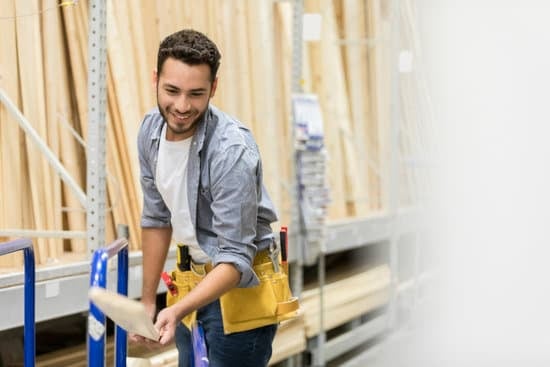Have you ever wondered how home improvement projects came about and how they have evolved over time? From increasing property value to enhancing the quality of life, home improvement has become a significant aspect of modern living.
In this article, we will delve into the history of home improvement, discuss popular trends that have shaped the real estate market, explore the rise of DIY home improvement, analyze the impact of technology on the industry, address common challenges and pitfalls, and predict future trends and innovations.
Home improvement plays a crucial role in not only increasing the aesthetic appeal and functionality of a property but also boosting its market value. For many homeowners, investing in renovation projects is a way to personalize their living spaces and create a sense of comfort and satisfaction. Additionally, with the growing emphasis on sustainability and energy efficiency, home improvements that prioritize eco-friendly practices can also lead to lower utility costs and a reduced carbon footprint.
Throughout history, the concept of home improvement has undergone significant transformations, influenced by societal changes, technological advancements, and economic developments. As such, understanding its evolution provides valuable insights into current trends and future prospects. Whether it’s embracing DIY methods or leveraging cutting-edge technology, home improvement continues to shape our living environments in profound ways.
The History of Home Improvement
Home improvement has a rich history that dates back to ancient civilizations, where homeowners and builders were constantly seeking ways to enhance the comfort and functionality of their living spaces. The earliest forms of home improvement can be traced back to the construction of simple shelters and the development of rudimentary tools and techniques for building and renovation.
In many ancient cultures, such as the Egyptians, Greeks, and Romans, home improvement was seen as a way to showcase wealth and social status, leading to the creation of elaborate architectural designs and ornate decorations.
Early Innovations in Home Improvement
As societies continued to evolve, so did the concept of home improvement. The Middle Ages saw a focus on fortifying homes for protection, resulting in the construction of moats, drawbridges, and other defensive features.
During the Renaissance period, there was a renewed interest in aesthetics and craftsmanship, leading to the development of intricate woodworking and decorative elements within homes. The Industrial Revolution brought about significant advancements in building materials and construction techniques, allowing for larger-scale improvements to be made more efficiently.
The Evolution of Home Improvement in Modern Times
In the 20th century, home improvement became more accessible to the general population as mass production lowered costs for building materials and tools. The post-World War II era saw a surge in suburbanization and housing development, sparking a widespread interest in DIY home improvement projects. This trend continued into the present day with homeowners taking on various renovations and upgrades to personalize their living spaces.
As we look back at the history of home improvement, it’s clear that this practice has been an integral part of human civilization for centuries. From its early roots as a means of survival to its modern-day expression as a reflection of personal style and comfort, home improvement has continually shaped our built environment and will continue to do so in the future.
Popular Home Improvement Trends
Home improvement trends have continuously evolved over the years, reflecting changing demographics, lifestyles, and design preferences. One of the most prevalent trends that have shaped the modern real estate market is the focus on energy efficiency and sustainability.
With growing awareness of environmental issues and rising energy costs, homeowners are increasingly seeking ways to make their homes more eco-friendly. This has led to the popularity of energy-efficient appliances, solar panels, and smart home technology aimed at reducing energy consumption.
Another prominent trend in home improvement is the emphasis on open floor plans and multi-functional spaces. As contemporary living becomes more casual and fluid, homeowners are knocking down walls to create spacious, interconnected areas that can serve multiple purposes. This trend also reflects a desire for seamless integration between indoor and outdoor living spaces, blurring the lines between interior and exterior design.
Additionally, there has been a significant shift towards low-maintenance materials and minimalist aesthetics in home improvement. Modern homeowners are opting for easy-to-clean surfaces, durable materials, and clutter-free designs that require minimal upkeep. This trend aligns with the busy lifestyles of many individuals and families today, making it an attractive option for those looking to enhance their homes without adding extra maintenance responsibilities.
| Home Improvement Trend | Impact on Real Estate Market |
|---|---|
| Energy Efficiency & Sustainability | Increased demand for eco-friendly homes; higher property value for energy-efficient properties |
| Open Floor Plans & Multi-functional Spaces | Rising popularity of open-concept homes; improved functionality and flexibility in living spaces |
| Low-Maintenance Materials & Minimalist Aesthetics | Preference for hassle-free upkeep; appeal to potential buyers due to streamlined design |
The influence of these popular home improvement trends extends beyond individual properties-they have also affected the real estate market as a whole. Homes with energy-efficient features often command higher prices and tend to sell faster than traditional properties. Similarly, open floor plans and minimalist designs have become sought-after characteristics among homebuyers, influencing architectural styles in new developments as well as renovations of existing homes.
As we consider how did home improvement end up shaping our modern real estate market? It’s clear that these popular trends reflect not only changing aesthetics but also broader societal shifts towards sustainability, flexibility, and convenience in our living spaces. Understanding these trends is crucial for homeowners looking to elevate their properties or individuals interested in entering the real estate market.
The Rise of DIY Home Improvement
The rise of do-it-yourself (DIY) home improvement projects has significantly impacted the home improvement industry in recent years. DIY has become a popular trend among homeowners as it allows them to take on projects themselves, saving on labor costs and giving them a sense of accomplishment. With the accessibility of online tutorials, instructional videos, and DIY blogs, more and more individuals are taking the initiative to tackle home improvement tasks on their own.
One of the main reasons behind the surge in DIY home improvement is the desire for personalization and customization. Homeowners want to put their own stamp on their living spaces and create unique designs that reflect their individual style. DIY allows them to execute their vision without having to rely on professional contractors, giving them greater control over the outcome of their projects.
Furthermore, the availability of affordable tools and materials has made it easier for individuals to embark on DIY projects. Many home improvement stores offer workshops and classes to educate customers on how to use various tools and complete different projects. Additionally, online marketplaces such as Etsy and Amazon have made it convenient for DIY enthusiasts to source unique materials for their projects.
- The popularity of YouTube channels dedicated to DIY home improvement
- Websites that offer step-by-step guides for different DIY projects
- The impact of social media platforms in promoting the DIY trend
The Impact of Technology on Home Improvement
Technology has had a profound impact on the home improvement industry, revolutionizing the tools, materials, and techniques used in various projects. Advancements in technology have not only made home improvement more efficient and convenient but have also elevated the overall quality of work.
One of the most significant technological advancements in home improvement is the development of innovative tools that streamline the renovation process. Power tools such as cordless drills, laser levels, and electric saws have made it easier for homeowners to tackle DIY projects with precision and speed.
In addition to advanced tools, technology has also introduced a wide range of smart home devices that have become increasingly popular among homeowners. Smart thermostats, security cameras, and lighting systems offer enhanced energy efficiency, convenience, and security. Furthermore, the availability of advanced building materials such as eco-friendly insulation, energy-efficient windows, and durable composite decking has significantly improved the sustainability and longevity of home improvement projects.
Moreover, technology has provided access to valuable resources such as online tutorials, digital design software, and virtual reality tools that allow homeowners to plan and visualize their renovation projects with greater accuracy. These resources have empowered individuals to take on more complex home improvement tasks with confidence. Overall, technology has reshaped the landscape of home improvement by providing innovative solutions that enhance the functionality, aesthetics, and sustainability of residential properties.
| Impact | Examples |
|---|---|
| Advanced Tools | Cordless drills |
| Smart Devices | Smart thermostats |
| Building Materials | Eco-friendly insulation |
Challenges and Pitfalls of Home Improvement
Undoubtedly, home improvement projects can significantly enhance the aesthetic appeal, functionality, and overall value of a property. However, many homeowners encounter various challenges and pitfalls when undertaking such projects. These obstacles can range from budget constraints and lack of expertise to unforeseen complications and subpar results. It is crucial for homeowners to be aware of these potential challenges and pitfalls in order to mitigate risks and ensure successful home improvement endeavors.
Here are some common challenges and pitfalls that homeowners often face during home improvement projects:
1. Budgeting: One of the most prevalent challenges in home improvement is staying within budget. Many homeowners underestimate the costs associated with materials, labor, permits, and unforeseen expenses. Developing a comprehensive budget and contingency plan is essential to avoid financial strain and incomplete projects.
2. Lack of Expertise: DIY home improvement projects have gained popularity in recent years, but not all homeowners possess the necessary skills and knowledge to effectively complete such tasks. Inexperienced individuals may inadvertently cause damage or create unsafe conditions within their homes. Seeking professional assistance or educational resources can help mitigate this challenge.
3. Unforeseen Complications: Home improvement projects often unearth unexpected issues such as structural damage, electrical problems, or plumbing issues. Homeowners must be prepared for these potential complications by conducting thorough inspections beforehand or being ready to adapt their plans as needed.
Addressing these common obstacles requires careful planning, research, and a realistic assessment of one’s capabilities. By being proactive in overcoming these challenges, homeowners can ultimately achieve successful home improvement results that enhance their living spaces while adding value to their properties.
The Future of Home Improvement
Sustainability and Eco-Friendly Design
One of the most significant upcoming trends in home improvement is a focus on sustainability and eco-friendly design. With increasing awareness of environmental issues, homeowners are seeking ways to reduce their carbon footprint and minimize their impact on the planet.
As a result, sustainable building materials, energy-efficient appliances, and eco-friendly construction techniques will become increasingly popular in home improvement projects. From solar panel installations to green roofs and recycled materials, sustainable design choices will define the future of home improvement.
Smart Home Technology Integration
Another key trend that will shape the future of home improvement is the integration of smart home technology. With the rise of interconnected devices and automated systems, homeowners are looking to incorporate smart technology into their living spaces. This includes smart thermostats, lighting systems, security cameras, and voice-controlled assistants. The seamless integration of these technologies into home improvement projects will not only enhance convenience but also add value to properties in the long run.
Health and Wellness-Oriented Design
As people become more conscious about their health and well-being, there is a growing emphasis on creating living spaces that promote wellness. In the future, we can expect to see an increased focus on health-oriented design elements in home improvement projects. This may include features such as indoor air quality control systems, natural light optimization, biophilic design principles, and dedicated spaces for fitness or relaxation activities within homes.
Conclusion
In conclusion, home improvement has played a crucial role in enhancing property value and the quality of life for homeowners. Throughout history, we have seen the evolution of home improvement from basic renovations to more advanced and innovative projects. The popular trends in home improvement are indicative of changing consumer preferences and lifestyles, as well as advancements in technology.
The rise of DIY home improvement has empowered homeowners to take on projects themselves, leading to a more hands-on approach and a sense of accomplishment. Additionally, the impact of technology on home improvement cannot be understated, as it has revolutionized the tools, materials, and techniques used in projects. This has made it easier for homeowners to achieve professional-level results on their own.
As we look ahead to the future of home improvement, it is clear that sustainability and energy efficiency will continue to be driving forces behind new trends and innovations. Homeowners looking to undertake improvement projects should keep these factors in mind when planning their projects. It’s important to stay informed about the latest practices, materials, and technologies in order to make informed decisions that benefit both your property value and the environment.
Frequently Asked Questions
What Happens on the Series Finale of Home Improvement?
On the series finale of Home Improvement, the Taylor family decides to leave their beloved home to pursue new opportunities in a different city. The emotional episode highlights the growth and changes each character undergoes over the years.
Why Did They End Home Improvement?
Home Improvement ended because of a combination of factors, including declining ratings and contract negotiations. Tim Allen, who played the lead role, wanted to focus on his film career, and the show had run its course after eight successful seasons.
What Happened to Randy in the Last Season of Home Improvement?
In the last season of Home Improvement, Randy decides to go on a life-changing adventure by joining a wildlife study program in Costa Rica. This choice reflects his character’s search for purpose and independence as he navigates young adulthood.

I’m thrilled to have you here as a part of the Remodeling Top community. This is where my journey as an architect and remodeling enthusiast intersects with your passion for transforming houses into dream homes.





